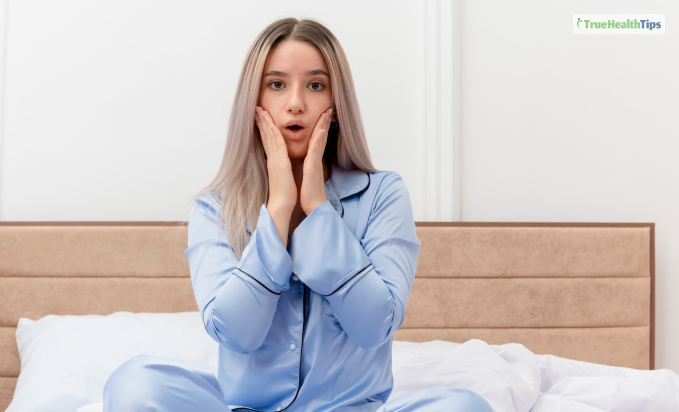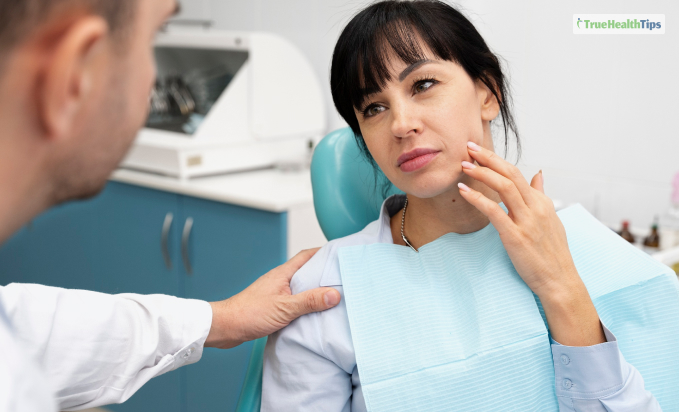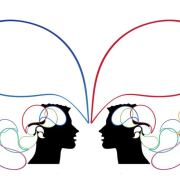
| Note: The information in this article is not intended to substitute professional medical advice, diagnosis or treatment. All images and text present are for general information purpose only. |
Bruxism exercises can be helpful if you suffer from the annoying habit of teeth clenching. This issue- Bruxism – is something that may develop as a result of an underlying condition or maybe a habit that one forms. A person who clenches their teeth may have no control over the condition and may unconsciously do it. It does not just involve clenching your teeth; it also includes grinding or gnashing them.
The following sections will examine the condition, its causes, treatment options, and how bruxism exercises can help.
What is Bruxism?

As per top health authorities, the condition can have two forms of Bruxism: awake and sleep bruxism. The former is when you are clenching, grinding, or gnashing your teeth while awake. The opposite happens in the latter, where you grind or clench your teeth while asleep. Sleep bruxism is a type of sleep-related movement disorder. That can lead to a higher chance of the person developing other disorders such as sleep apnea or snoring.
However, there are also recorded cases of people experiencing mild Bruxism. Such people do not usually require any treatment. The concern arises when a person experiences Bruxism frequently. This leads to severe problems such as damaged teeth, headaches, and jaw disorders.
Moreover, the implications can be severe when you are unaware of clenching your teeth, such as when you have sleep bruxism. The complications can develop as subtle signs that you have this condition. This will require you to visit a doctor.
What are the symptoms?

Following are the symptoms that can help you recognize you are experiencing this condition:
- Teeth grinding that is loud enough to alert people around you- either awake or asleep.
- Flattened, chipped, or fractured and loose teeth.
- Enamel becomes worn out, and the deeper layers of the tooth are thus visible.
- Tight jaw muscles that also feel tired. A locked jaw that does not open or close.
- There is pain in the jaw, neck, and face or soreness in those areas.
- A pain that also feels like an earache that does not come from an underlying ear issue.
- Dull headache in the temples
- Damage to the inside of your cheeks due to chewing the area
- Disruption in your sleep schedule.
Common causes of Bruxism
There is still speculation about the primary causes of this condition. However, thus far, it is known that there are several factors, such as Bruxism, that come up in one’s life.
– Awake Bruxism may be due to emotional stress from an underlying condition such as stress, anxiety, tension, or frustration. It could be as a form of coping strategy that you have or due to a habit that develops over time that you need while concentrating deeply.
– Sleep bruxism can be due to chewing activity that develops in relation to sleep. This is mostly due to waking up during sleep.
What are the treatment options?

The treatment options include:
Dental approaches such as mouth guards and splints. These keep your teeth separate and avoid clenching or grinding. These can also be made of soft materials or hard acrylic that can fit over your lower or upper teeth.
- Dental correction procedures also help control Bruxism. This is an option when the issue escalates significantly, and your tooth is so worn that you have sensitivity now.
- Dental correction helps fix the crown or the overall teeth surface damaged due to clenching and grinding.
- If an underlying cause has been diagnosed, the treatment will revolve around this.
- For example, if the cause of Bruxism is anxiety or stress, effective management options are helpful. A recent study found that counseling about the triggers, relaxation therapy, or modifying habits can help reduce the habit.
- Medications have also been seen to help in controlling this habit. These include- botox injections, muscle relaxants, and medication for stress and anxiety. Short-term use of anti-anxiety or anti-stress medications can facilitate dealing with the underlying cause.
- Additionally, Bruxism exercises have also helped control the discomfort. It might as well control the condition with time.
How do Bruxism exercises help?

One of the major signs that you may be experiencing Bruxism (especially if you have sleep bruxism) is you’ll feel tension in your facial muscles and jaw.
Bruxism exercises are mostly stretches that can help you release the tension from your jaw. Helping you cope with the stress that results in the urge to clench your teeth or grind them.
These exercises can include the use of equipment that facilitates the stretches. The following exercises will allow you to control Bruxism:
Jaw Osteopressure
You will need a special tool, such as an osteopressure tool or an entire set that can be found online or with a physical therapist. These steps can help you nail the exercise:
- The Osteopressure tool with rounded attachment can help you complete the exercise.
- Press your fingers up to where your lower and upper jaw connect.
- Press till you feel a bulge, and continue to press the spherical handle in the bulge.
- Support your head if you need it. You can do this by pressing the palm of your free hand against the opposite side of your head.
- Pressing the spherical handle into your jaw with more force will take some practice. One sign that you are pressing it with the right amount of pressure is assessing if you can breathe easily.
- Pressing around the area, search for other sensitive spots that feel tense. Once you press the equipment, you should be able to feel the pressure/tension release.
- You can continue this for 2 or 3 minutes until there is a pressure release sensation.
- Finally, finish one side of the jaw and repeat this for the other side.
Dynamic Mandible Stretch
This is a dynamic exercise that can take some time, nearly 2 minutes.
- You need to open your mouth as wide as comfortably possible for you. Then, close it.
- Next, move your lower jaw down to the left as far as possible, release it to return to the position, and repeat on the right side.
- Keep the head and neck in alignment, moving your (jut) chin forward. Just as much as possible without harming yourself.
- Next, forcefully pull your chin back in your face as much as possible and finish the exercise.
The steps to these exercises can be better understood with the help of the following tutorial. With a bonus exercise for you!:
Conclusion
In conclusion, this was all on the bruxism exercises that can help you get relief from bruxism pain, and maybe, in combination with other treatment options, you can get rid of this condition altogether.
However, just as you did not realize sooner that this is something you are experiencing, this won’t go away magically. You must be consistent with the treatment options and continue doing the exercises. Do you have any other remedy that can help with Bruxism? Tell us in the comments below!











